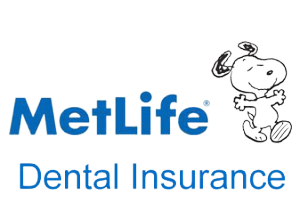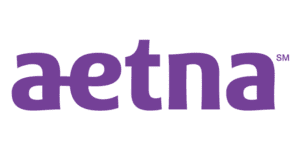FREQUENTLY ASKED QUESTION

What are the three types of dental X rays?
At Channel Islands Family Dental Office Ventura, three main types of dental x rays In Ventura are commonly used: Bitewing, Periapical, and Panoramic X-rays. Bitewing X-rays capture the crowns of your upper and lower teeth, helping detect decay between teeth. Periapical X-rays focus on one or two teeth from root to crown, while Panoramic X-rays offer a broad view of the entire mouth, which is useful for planning treatments.
What are the side effects of dental X-rays?
Dental X ray Ventura, particularly at Channel Islands Family Dental Office, is safe with minimal side effects. Rarely, patients may experience slight tissue sensitivity. As a precaution, pregnant women are advised to avoid dental X rays to prevent fetal exposure to radiation.

What types of X-rays are used in dentistry?
Channel Islands Family Dental Office Ventura uses several types of Dental X rays including Bitewing, Periapical, Panoramic, and Occlusal X-rays. Each serves a specific purpose, from diagnosing decay between teeth, examining tooth roots, viewing the entire mouth, to tracking the development and position of teeth.
How many X-rays should a dentist take?
The number of Ventura dental x rays a dentist at Channel Islands Family Dental Office may take depends on your dental health needs and history. As a general rule, new patients might receive a full mouth series, while routine check-ups may only require bitewing X-rays.
DENTAL X-RAYS
Dental X-Rays have become a routine part of dental check-ups. Whether it’s a dental (periapical) or panoramic X-ray, these imaging procedures are crucial tools for our Ventura-based dentist. They offer a comprehensive view of the oral structures, revealing hidden conditions that might go unnoticed during a visual examination. This allows for precise diagnoses of oral diseases and a thorough evaluation of all oral components.
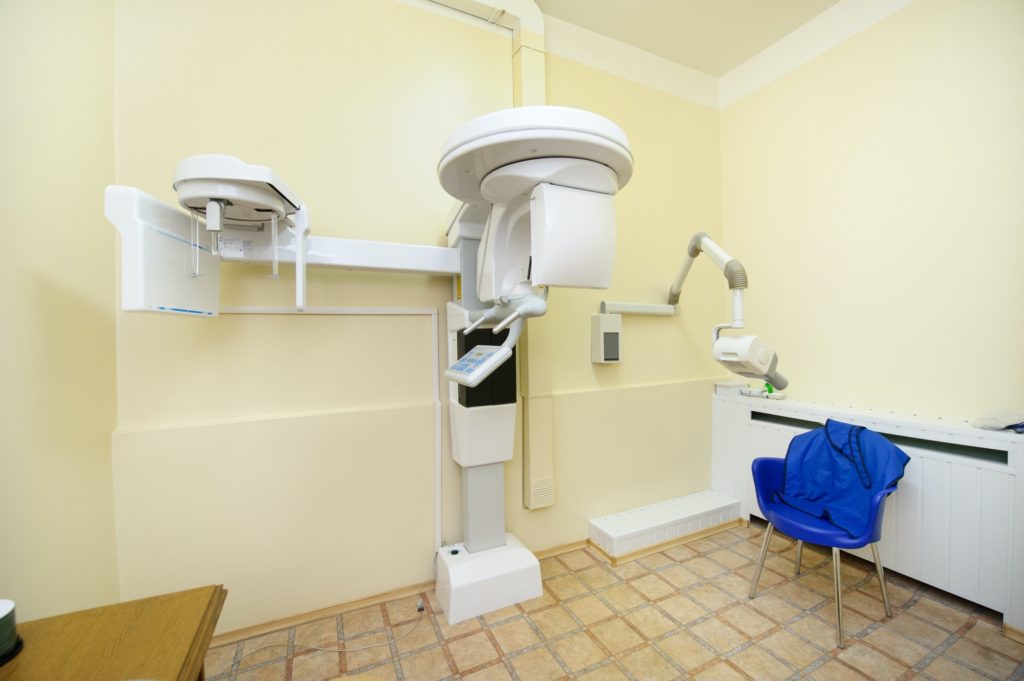
1. WHAT ARE DENTAL X-RAYS?
They are images of the teeth and their neighboring structures that are obtained by an X-ray machine. These devices emit electromagnetic waves that can pass through teeth, bone, and tissues and then to form an image on a “film”; this can be “analog” (conventional) or digital. There are different types of dental x rays; we have the intraoral and extraoral, being the most common the Periapical and Panoramic.
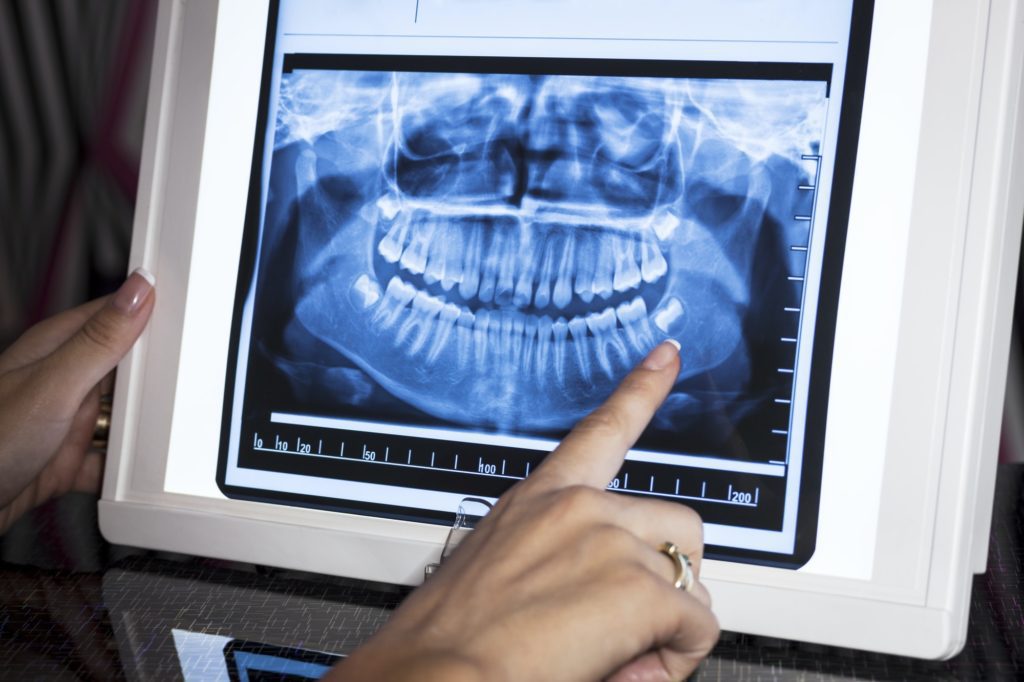
-
Dental caries:
By using X-rays, dentists can see cavities located between teeth (interproximal) that may be difficult to detect during a regular clinical examination, as well as visualize cavities forming beneath restorations.
-
Periodontitis:
It is feasible to diagnose this ailment and commence its treatment to slow down its advancement.
-
Abscesses and dental cysts:
These are not visible to the naked eye; radiographs are essential as they capture details at the apex (tip) level of the tooth.
-
Wisdom teeth:
Utilizing these, we can observe their orientation and their interaction with nearby structures, assisting in the determination of whether extraction or retention in the mouth is necessary.
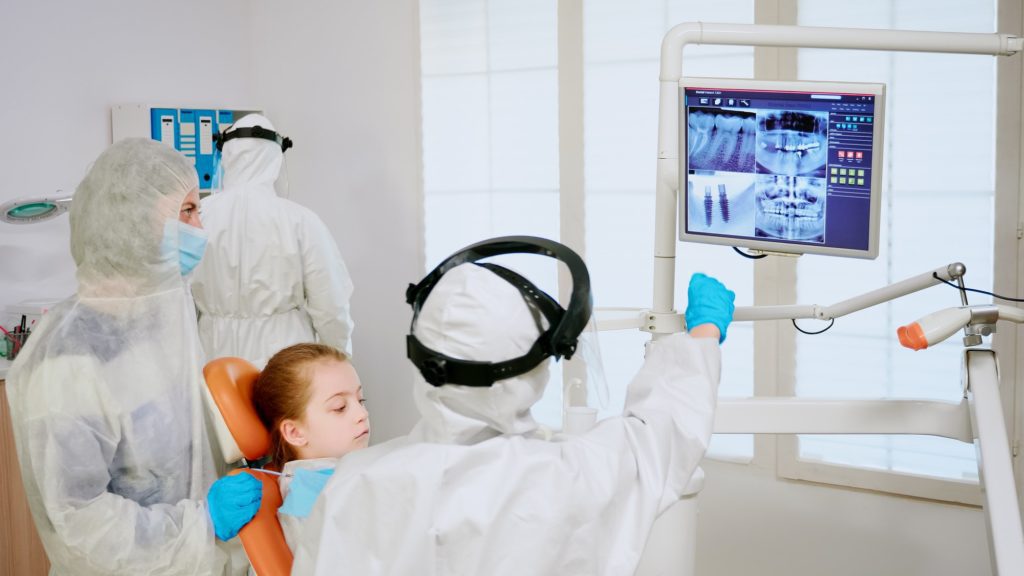
5. WHY ARE X-RAYS IMPORTANT FOR DENTISTS?
- They complement the clinical evaluation of a patient.
- They are instrumental in all stages of treatment, as they can corroborate and complement an initial diagnosis and thus, plan an individualized treatment for each patient.
- It constitutes a complementary diagnostic element to all dental specialties, not only in the initial stage of diagnosis and treatment planning but also as an immediate control.
- It allows us to evaluate the quality of the treatment, such as control of endodontics, restorations, fixed rehabilitations, implants, cystic lesions, tumor lesions, dental trauma, maxillofacial trauma, etc.
According to the American Dental Association (ADA): “Finding and treating dental problems at an early stage saves time, money and unnecessary discomfort, in this case, dental x rays are perfect for detecting problems in the mouth that would otherwise go undetected.”
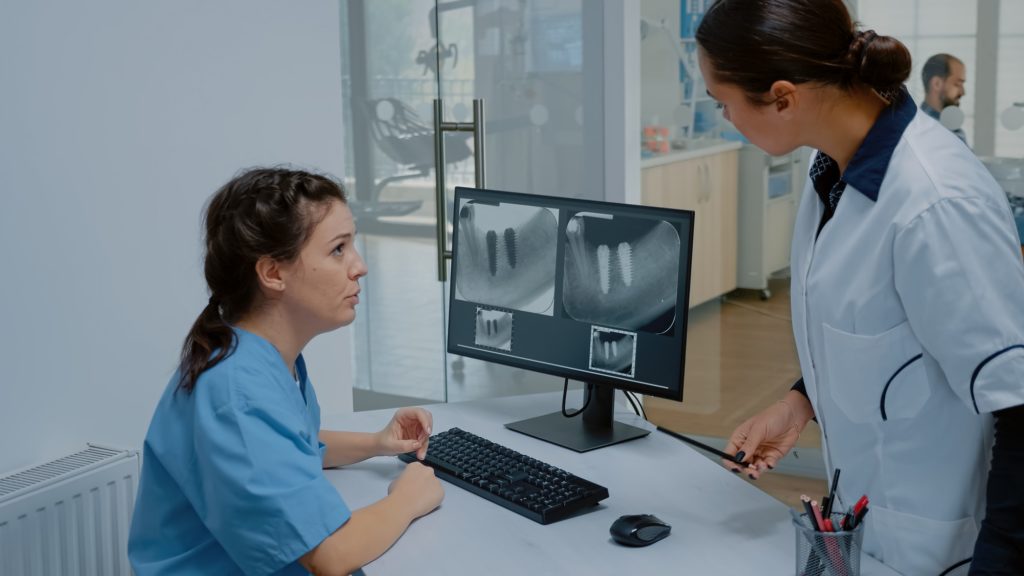
6. DOES IT HURT TO GET X-RAYS?
The evolution in technology has also led to safer dental X-ray machines and decreased radiation effects.
The radiation that patients experience when taking modern X-rays is extremely low, so it is no longer a problem.
Digital radiography makes it possible to reduce radiation, exposure time and improve image quality.
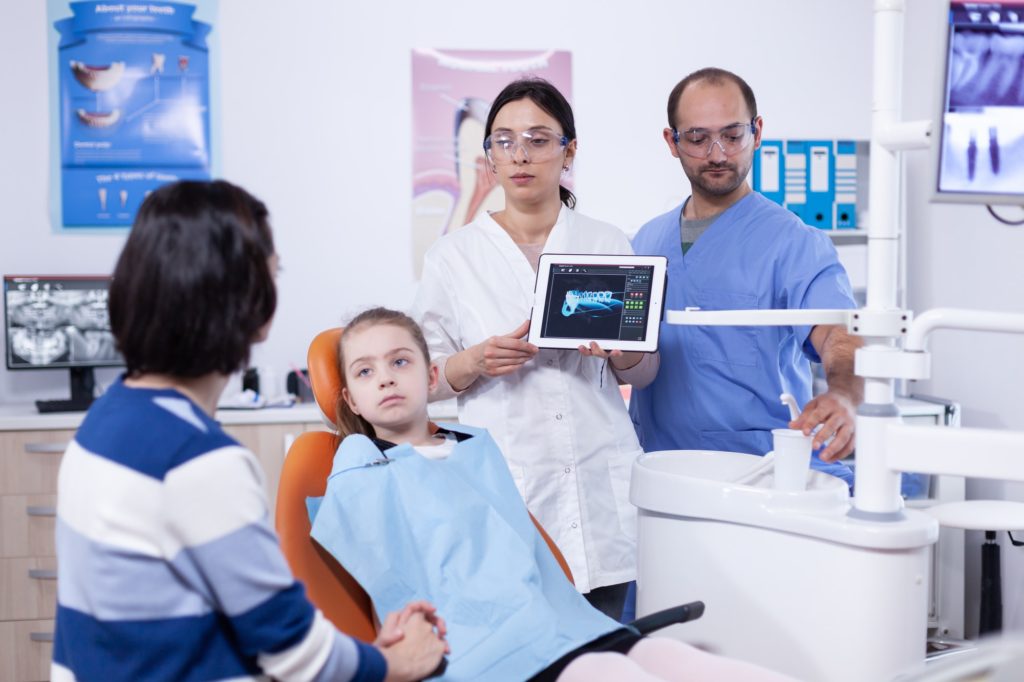
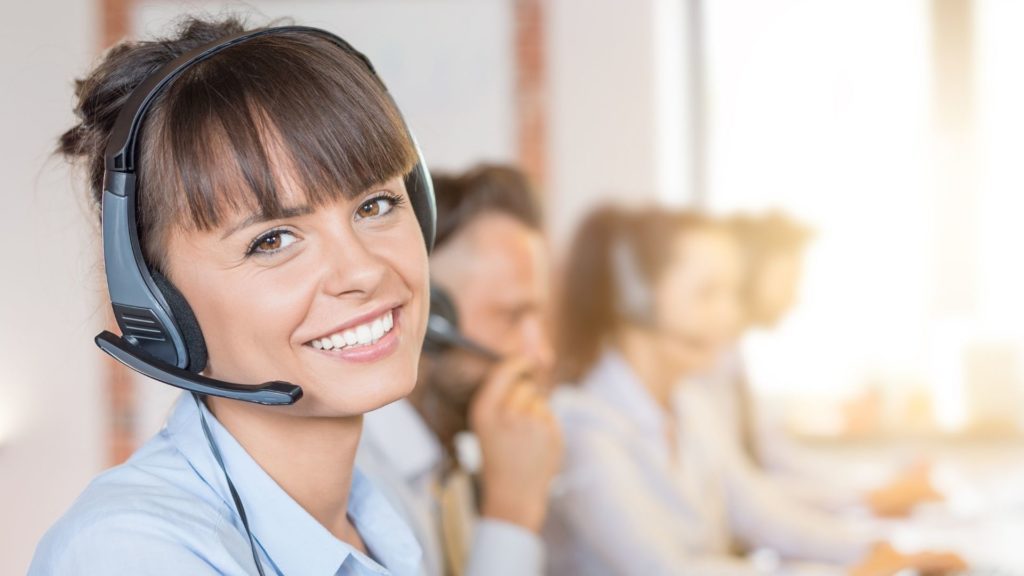
7. Contact Us
If you have any questions about this topic or any other, please feel free to contact or visit us at Channel Islands Family Dental.
At Channel Islands Family Dental, we will be attentive to your visit to make a timely diagnosis. In addition, our dentists in Ventura will be able to guide you to the best treatment to bring back your best smile.





























